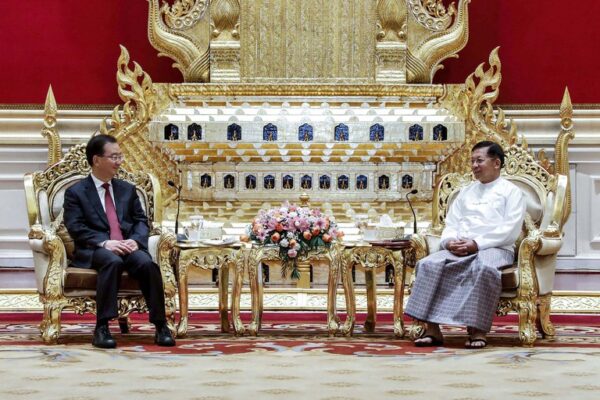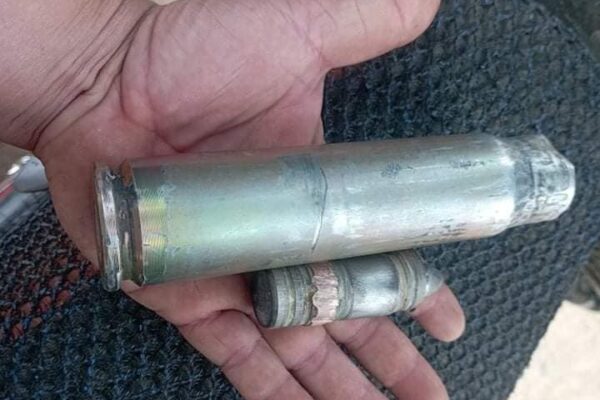
Reporting carries high costs for RFA journalists in authoritarian Asian countries
To mark the 30th anniversary of the UN General Assembly’s proclamation of World Press Freedom Day on May 3, 1993, Radio Free Asia is highlighting the plight of its journalists and bloggers who have been jailed or detained in several of the Asia-Pacific region’s authoritarian states. This year’s theme, “Freedom of expression as a driver for all other human rights,” highlights the relationship between threats to media freedom, journalist safety, and increasing attacks on other key human rights. The concerns are valid, as the jailing of RFA reporters and bloggers, and their BBC and Voice of America colleagues, occurred in countries and territories that have experienced a decline in broader freedoms–if they had such liberties to begin with. Edmund Wan Edmund Wan Yiu-sing, known by his DJ name “Giggs,” was sentenced by a court in Hong Kong in October 2022 to two years and eight months in prison for sedition and money laundering, charges he confessed to in a plea deal. Prior to his February 2021 arrest, he hosted programs that reported and commented on Hong Kong and Chinese politics for D100, an independent online radio station. Wan also hosted a program for Radio Free Asia’s Cantonese Service from 2017 to 2020. Authorities charged that Wan hosted programs that “incited others to resist or overthrow the Chinese Communist Party” and “promoted Hong Kong independence,” the Hong Kong Free Press independent news outlet reported. Wan had pleaded guilty to one charge of seditious intent for on-air comments he made in 2020, and three charges of money laundering related to crowd funding transactions. In exchange, six other charges were left on file, which means they cannot be pursued without the court’s permission. The charges come under a law, created when Hong Kong was under British rule, that defines sedition as “intent to arouse hatred or contempt of the Hong Kong [government] or to incite rebellion, and cause dissatisfaction with it.” The sedition law was revived by the Hong Kong government during the 2019 protest movement and has been used to arrest pro-democracy activists.In addition to the time in prison, the court also ordered Wan to hand over HK$4.87 million (about U.S. $620,000) in assets. Yeang Sothearin Former Radio Free Asia Khmer news anchor Yeang Sothearin was taken into custody in November 2017, along with Uon Chhin, an RFA photographer and videographer. They were charged with “illegally collecting information for a foreign source” after RFA closed its bureau in the capital of Phnom Penh in September of that year amid a government crackdown on independent media. They were slapped with additional charges for illegally produced pornography in March 2018. If convicted of the first charge, they could face a jail term of between seven and 15 years. Yeang Sothearin and Uon Chhin are out on bail, but they remain in legal limbo after several courts have rejected a series of appeals. In October 2022, Cambodia’s Supreme Court returned Yeang Sothearin’s passport, allowing him to visit his ailing father and sister in Vietnam. Cambodia ranks 140 out of 180 in the 2022 Reporters without Borders (RSF) World Press Freedom Index, between Equatorial Guinea and Libya. After Cambodia’s emergence from decades of warfare in the 1990s, the country’s press had “flourished until the long-serving Prime Minister Hun Sen launched a ruthless war against independent journalism before the 2018 elections,” RSF said. Uon Chhin Former Radio Free Asia Khmer photographer and videographer Uon Chhin and RFA news anchor Yeang Sothearin were taken into custody in November 2017, amid a gathering crackdown on independent media by long-ruling Prime Minister Hun Sen. The pair were charged with “illegally collecting information for a foreign source” after RFA closed its bureau in the capital of Phnom Penh in September of that year. They were slapped with additional charges for illegally produced pornography in March 2018. If convicted of the first charge, they could face a jail term of between seven and 15 years. Yeang Sothearin and Uon Chhin are out on bail, but they remain in legal limbo and their media careers frozen after several courts have rejected a series of appeals. Cambodia ranks 140 out of 180 in the 2022 Reporters without Borders (RSF) World Press Freedom Index, between Equatorial Guinea and Libya. “Hun Sen went after the press mercilessly ahead of parliamentary elections in July 2018. Radio stations and newspapers were silenced, newsrooms purged, journalists prosecuted – leaving the independent media sector devastated,” said RSF. “Since then, the few attempts to bring independent journalism back to life have drawn the wrath of ruling circles.” Htet Htet Khine Htet Htet Khine, a former BBC television presenter, was sentenced in September 2022 to three years in prison with hard labor for “incitement” and “illegal association” for her reporting work. The face of BBC Media Action’s national television peace program Khan Sar Kyi (Feel It) from 2016 to 2020, which documented the impact of war on Myanmar society, the freelance journalist and video producer had been in detention in Yangon’s notorious Insein Prison awaiting trial since Aug. 15, 2021, when she was arrested with fellow reporter Sithu Aung Myint. Htet Htet Khine was arrested six months after the Feb. 1, 2021 military coup by junta security forces, one of some 150 journalists detained by junta authorities. Family members expressed concern over Htet Htet Khine’s well-being in prison amid the COVID-19 pandemic and the prospect of physical abuse by jailers. Veteran journalists told Radio Free Asia that her case underscored the fact that reporters face serious personal risk to carry out their work under military rule in Myanmar. Sithu Aung Myint A special court in Yangon’s Insein Prison in December 2022 sentenced veteran journalist Sithu Aung Myint to seven years in prison, which came on top of two earlier sentences totaling five years for allegedly inciting sedition in the army, meaning he will have to spend 12 years in prison. The sentence by a court set up by the junta that took power in a Feb. 1, 2021, military coup…





